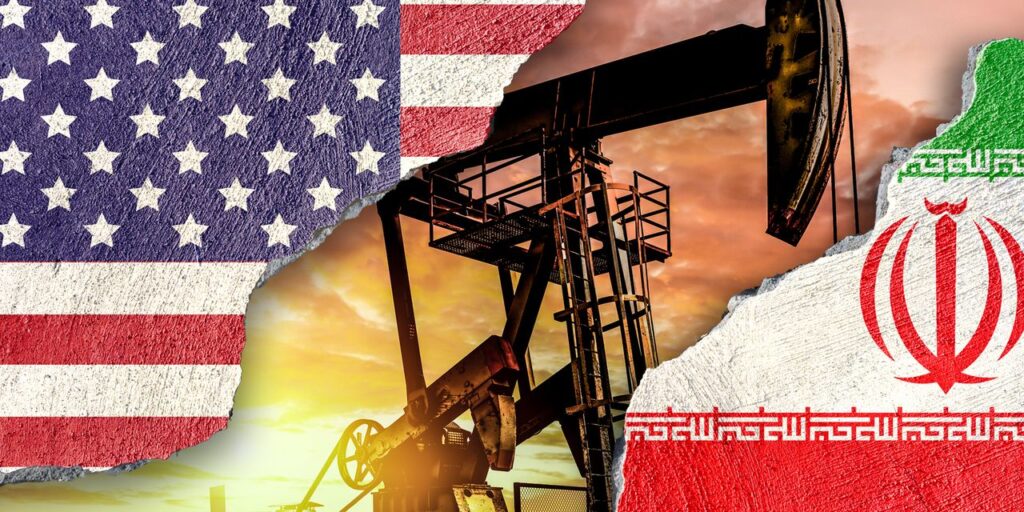A full return of Iranian oil production would have a significant impact on the global market, analysts say, but isn’t likely even as some news reports this week suggested an imminent, interim nuclear deal between the U.S. and Iran.
“A deal between the U.S. and Iran would really upset the oil applecart,” said Michael Lynch, president of Strategic Energy & Economic Research (SEER). It’s not surprising that negotiations are reportedly “being done quietly, given all the opposition in both countries to any agreement.”
News reports this week said U.S. President Joe Biden’s administration has restarted talks with Iran. The discussions are aimed at negotiating the release of American prisoners held by Tehran and curbing Iran’s growing nuclear program, according to a report from the Wall Street Journal Wednesday, citing people close to the discussions.
In May 2018, under then-U.S. President Donald Trump, the U.S. withdrew from the 2015 Joint Comprehensive Plan of Action and re-imposed sanctions on the export of Iranian oil. The deal, also known as the Iran nuclear agreement between Iran and a group of world powers, was aimed at curbing Iran’s nuclear capabilities.
Efforts and negotiations to revive the deal have been held on and off ever since, including a stalled proposal to restore it from the European Union last August.
So far, there isn’t any hint of an upcoming breakthrough in nuclear deal talks, said Tom Kloza, global head of energy analysis at the Oil Price Information Service (OPIS), a Dow Jones company. He said he tends to agree with some analysts who believe that any real progress in negotiations would take place after the 2024 U.S. presidential elections.
The reports of a potential deal are just “noise for the moment, and Iran would have to hurdle a veritable gauntlet of issues to raise production from the 2.5 million [barrel a day] or so figure they now see,” he said.
Earlier this month, a report from the Middle East Eye, a London-based news site said the Iran and the U.S. were nearing a temporary deal that would allow some sanctions relief in return for reducing Iranian uranium enrichment activities. Other news reports had also cited progress in negotiations in recent weeks.
The U.S. Department of State, however, denied the speculation surrounding a nuclear deal. “Rumors about a nuclear deal, interim or otherwise, are false and misleading,” spokesman Matthew Miller said during a June 14 press briefing.
‘Mini’ deal?
News reports that suggest an interim U.S.-Iran deal is imminent and could include some oil sanctions relief are “unlikely to prove accurate,” Matthew Parry, head of long-term analysis at Energy Aspects, told MarketWatch.
He does believes some “back-channel discussions are happening,” focused on trying to cap Iran’s uranium enrichment activity.
A “limited deal” on that point could emerge, but he expects the U.S. to only agree to “limited concessions in return,” and that would not include an easing of oil export sanctions.
While some analysts don’t expect to see an interim deal reached anytime soon, there is the possibility of a deal that helps to limit Iran’s uranium enrichment, without easing sanctions on Iranian oil exports.
“We are convinced that a mini deal with Iran is imminent,” said Manish Raj, managing director at Velandera Energy Partners. That, however, would likely be a “non-event for oil markets.”
Under a potential “mini deal,” Iran may agree to pause its nuclear research, suspend nuclear enrichment above 60%, stop weapon and drone sales to Russia and Syria and release U.S. citizen prisoners, Raj said.
In return, the U.S. may agree to adopt a more friendly tone on Iran and issue a sanction waiver that would allow Iran to collect on its frozen monetary funds, he said.
SEER’s Lynch said the release of Americans held in Iran might free up some of Iran’s cash from economic sanctions, “without allowing greater oil sales.”
U.S. and Iraqi officials said that as contacts between the U.S. and Iran resumed, the U.S. government approved 2.5 billion euro (US$2.7 billion) in payments by the Iraqi government for Iranian electricity and gas imports, according to a June 14 Wall Street Journal report, which noted that the money had been previously frozen by U.S. economic sanctions.
“Everyone is aware that there is a lot of potential Iranian oil that could hit the market, and fairly quickly, with relaxation of sanctions,” said Lynch. “People long in the oil market going into the weekend are very likely to be holding their breath.”
“ “People long in the oil market going into the weekend are very likely to be holding their breath.” ”
Still, Raj said that if a deal between the U.S. and Iran is reached, it would likely be more of a “symbolic handshake” rather than a substantial agreement.
Neither side is really motivated to reach a deal, he said. The U.S. is in no hurry to negotiate since any deal will be “political suicide,” and Iran is in no rush since its “dark fleet of vessels already allows it to sell oil in the black market.”
Rising Iran oil exports
Oil exports from Iran have already seen a sharp climb without a U.S. deal, according to data and analytics firm Kpler.
Iranian crude and condensate exports in May of this year were estimated at about 1.57 million barrels a day, according to data from Kpler. In May 2022, exports were at 395,500 barrels a day.
Matt Smith lead oil analyst, Americas, at Kpler said the May figure was highest since March 2019, with basically all of the oil going to China.
But a U.S.-Iran deal wouldn’t make sense given where crude-oil prices currently stand, he said.
It “makes sense at prices over $100” a barrel, not with West Texas Intermediate crude
CL.1,
CLN23,
at around $70, Smith said.
Oil prices traded higher on Friday. Prices on Thursday settled at their highest in a week, with U.S. benchmark WTI oil for July delivery at $70.62 a barrel on the New York Mercantile Exchange and global benchmark Brent crude’s
BRN00,
BRNQ23,
August contract at $75.67 a barrel on ICE Futures Europe.
Also see: Commodity market performance so far this year points to an economic recession, but a rise for industrial metals
Iran’s oil output
Whether or not an interim deal is imminent, speculation surrounding one has prompted “new interest” in Iran’s oil production capacity if sanctions were to be lifted, said Energy Aspects’ Parry.
Energy Aspects currently estimates Iran’s crude-oil production at 2.7 million barrels a day, and that’s a “substantial recovery” from a low of 1.9 million barrels a day in the summer of 2020, Parry said.
Iran has the technical capacity to raise production to around 3.5 million barrels a day over six months, according to Energy Aspects.
However, “such a quick recovery would only happen if export sanctions were lifted” and Asian buyers, excluding China, started purchasing Iranian barrels in significant quantities, Parry said.
Kloza pointed out that Iran did produce oil at a rate of 4 million barrels a day, back in 2017 or so.
That could “be wildcard down the road, so quiet negotiations with back channels by this White House make sense,” he said.
For now, performance of crude oil this summer depends on whether demand exceeds supply according to the projected balances from the International Energy Agency, the Organization of the Petroleum Exporting Countries and others, said Kloza.
July should see inventory withdrawals “if these entities are right, and if markets remain sloppy, a lot of patient traders may capitulate and exit the market,” he said.
Read the full article here













